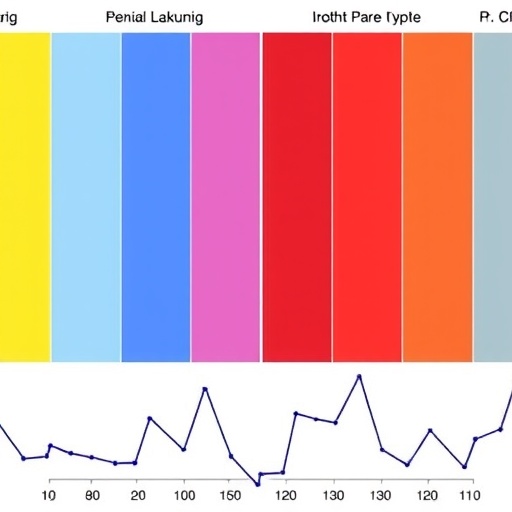In the dynamic landscape of cancer biology, exosomes—minute extracellular vesicles secreted by cells—have emerged as pivotal players in orchestrating the intricate interplay within the tumor microenvironment (TME). These nanoscale vesicles serve not merely as passive carriers but as active messengers that modulate multiple facets of tumor progression and immune regulation. A recent comprehensive review from researchers at the Haikou Affiliated Hospital of Central South University Xiangya School of Medicine, published in Med Research, sheds light on the dualistic nature of tumor-derived exosomes (TDEs), harnessing both tumor-promoting and immune-modulating mechanisms that profoundly influence cancer development and therapy outcomes.
Exosomes are lipid bilayer-encapsulated vesicles ranging typically from 30 to 150 nanometers in diameter. Tumor cells exploit exosomes to transfer a complex cargo that includes microRNAs (miRNAs), long noncoding RNAs (lncRNAs), circular RNAs (circRNAs), proteins, and lipids, effectively manipulating recipient cells in the microenvironment. This cargo reprograms cellular behavior by modulating critical signaling pathways such as PI3K/AKT, MAPK/ERK, Wnt/β-catenin, and NF-κB, all of which are well known for their roles in cell proliferation, survival, migration, and drug resistance. The review meticulously details how TDEs potentiate oncogenic signaling networks that facilitate tumor growth and metastasis.
Beyond their direct influence on tumor cells, TDEs substantially remodel the immune landscape of the TME. They achieve this through delivering immunoinhibitory molecules such as programmed death-ligand 1 (PD-L1) and cytotoxic T-lymphocyte-associated protein 4 (CTLA-4), which suppress the activity of cytotoxic T cells and enable immune evasion. Additionally, TDEs promote the differentiation and recruitment of immunosuppressive populations including M2-polarized macrophages and regulatory T (Treg) cells, fostering an immunosuppressive niche that protects tumor cells from immune attack. This reciprocal modulation highlights the sophisticated crosstalk facilitated by exosomes, allowing tumors to sculpt an environment conducive to their survival and metastasis.
.adsslot_0QBziUalRG{width:728px !important;height:90px !important;}
@media(max-width:1199px){ .adsslot_0QBziUalRG{width:468px !important;height:60px !important;}
}
@media(max-width:767px){ .adsslot_0QBziUalRG{width:320px !important;height:50px !important;}
}
ADVERTISEMENT
Conversely, the review illuminates the emerging therapeutic potential of exosomes derived from immune cells or engineered vesicles. Such exosomes can deliver antitumor cytokines, tumor-associated antigenic peptides, or RNA therapeutics designed to reactivate effector immune cells or reverse immunosuppression, thereby restoring antitumor immunity. This bifunctional nature—where exosomes function both as perpetrators of immune escape and as vehicles for immune restoration—positions them at a unique intersection for innovative therapeutic strategies, including combined immunotherapies and precision medicine approaches.
Another compelling aspect elucidated in the review is the utility of exosomes as liquid biopsy biomarkers. Because the molecular content of exosomes mirrors the heterogeneity and dynamic changes within tumors, profiling exosomal RNA and protein constituents offers a noninvasive window into tumor staging, mutation status, and therapeutic responsiveness. Such liquid biopsy approaches may revolutionize cancer diagnostics by enabling real-time monitoring of disease progression and early identification of treatment resistance, potentially allowing clinicians to tailor interventions with unprecedented precision.
Mechanistically, the biogenesis and release of exosomes involve the inward budding of the endosomal membrane to form multivesicular bodies, which subsequently fuse with the plasma membrane to release exosomes into the extracellular milieu. Tumor cells exhibit aberrant regulation of this process, often amplifying exosome production to disseminate oncogenic signals widely. The selective packaging of RNA species and proteins into exosomes is mediated by specific RNA-binding proteins and sorting machinery, underscoring the highly regulated and purposeful nature of exosome-mediated communication.
Of particular interest are the noncoding RNAs—miRNAs, lncRNAs, and circRNAs—enriched in TDEs, which serve as master regulators of gene expression in recipient cells. miRNAs, for instance, can inhibit tumor suppressor gene expression or activate oncogenes once internalized. lncRNAs and circRNAs add an additional layer of epigenetic and post-transcriptional control, influencing chromatin remodeling, mRNA stability, and microRNA sponging. The review catalogs several oncogenic noncoding RNAs identified in TDEs, implicating them in promoting angiogenesis, enhancing invasiveness, and modulating chemoresistance.
The signaling pathways activated by TDE cargo are canonical nodes within cancer biology: activation of the PI3K/AKT pathway enhances survival signaling and metabolic reprogramming; MAPK/ERK cascades regulate proliferation and differentiation; Wnt/β-catenin signaling controls stemness and epithelial-mesenchymal transition (EMT); and NF-κB pathway activation fosters inflammation and resistance to apoptosis. The convergence of multiple pathways modulated by exosomal cargos reveals a network complexity that underscores the challenge of targeting these processes therapeutically but also identifies numerous potential molecular targets.
Intriguingly, the immunomodulatory roles of exosomes present both opportunities and challenges in cancer immunotherapy. By transferring immune checkpoint molecules like PD-L1, TDEs shield tumors from immune surveillance. However, exosome-based delivery systems have shown promise in enhancing immune responses—engineered exosomes loaded with tumor antigens or immunostimulatory molecules can act as vaccines, stimulating dendritic cells and cytotoxic T lymphocytes. The review forecasts that integrating exosome engineering with checkpoint blockade or adoptive cell therapies could synergize to overcome resistance and improve patient outcomes.
The authors also explore the future potential of manipulating exosome pathways in therapeutic development. Strategies may include inhibiting exosome biogenesis or release to block pro-tumorigenic signaling, engineering exosomes as delivery vehicles for gene therapies or drugs, and designing exosome-based diagnostics and prognostic tools. Such approaches envision exosomes not simply as biomarkers but as active agents in precision oncology, capable of altering tumor behavior and immune responses in a controlled manner.
Moreover, the review emphasizes the importance of understanding the heterogeneity of exosomes, as vesicles differ widely depending on their cellular origin, molecular cargo, and biophysical properties. Advances in high-throughput sequencing, proteomics, and imaging technologies are critical for unraveling this complexity, enabling the identification of exosome subpopulations with distinct functional profiles that may have differential impacts on tumor progression or therapeutic response.
As research accelerates, the clinical translation of exosome-based approaches faces hurdles such as standardized isolation techniques, scalable manufacturing, and regulatory approval pathways. Nonetheless, the review maintains an optimistic outlook, citing numerous preclinical and early clinical studies that validate the significance of exosome biology in oncology. The dual role of tumor-derived exosomes—as both villains unleashing malignant phenotypes and as potential allies delivering therapeutic payloads—captures the duality inherent in cancer’s biological complexity.
In summary, exosomes stand at the forefront of contemporary cancer research, embodying a multifaceted paradigm that intertwines tumor biology and immune regulation. This review serves as a compelling synthesis of the state-of-the-art, weaving molecular insights with clinical implications and envisaging a future where exosome-based diagnostics and therapeutics reshape the oncology landscape. By decoding the language of these diminutive vesicles, scientists are poised to unlock novel avenues for combating one of humanity’s most formidable diseases.
Subject of Research: Tumor-derived exosomes and their dual roles in cancer progression and immune modulation.
Article Title: Dual Roles of Tumor-Derived Exosomes in Cancer and Immunity
Web References:
http://dx.doi.org/10.1002/mdr2.70022
Image Credits: The authors.
Keywords: Cancer, Tumor microenvironment, Tumor-derived exosomes, Noncoding RNA, Immune modulation, Liquid biopsy, Signal transduction, Immunotherapy, Exosome engineering
Tags: cancer progression mechanismscancer therapy outcomes and exosomesexosomes in cancer researchextracellular vesicles in oncologyimmune modulation by exosomeslipid bilayer-encapsulated vesiclesmicroRNA cargo in exosomessignaling pathways in cancertherapeutic implications of exosomestumor microenvironment interactionstumor-derived exosomes functionstumor-promoting exosomes




